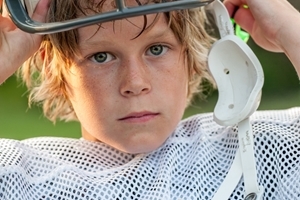As we approach the hottest days of summer, keeping cool becomes increasingly important, not only for travel nurse professionals but for athletes, patients and others exercising outside.
Experts are urging paramedics to change how they treat people suffering from heatstroke. The National Athletic Trainer’s Association said that heatstroke victims need immediate cooling prior to being taken to a hospital.
“We’re trying to get people to realize that’s how you save people’s lives from heatstroke,” Douglas Casa, director of athletic training education at the University of Connecticut, told HealthDay.
As the most serious form of heat injury, heatstroke is a medical emergency. Although heatstroke – also called sunstroke – mainly affects people ages 50 and older, healthy young athletes can fall victim as well.
Korey Stringer, National Football League player for the Minnesota Vikings, collapsed and died from heatstroke in 2001 during a preseason practice. He was 27-years-old. After reaching a settlement with the NFL, Stringer’s wife donated money to a foundation whose goal is to prevent others from falling victim to heatstroke.
Heatstroke results from prolonged exposure to high temperatures and dehydration, which triggers failure of the body’s temperature control system. Healthcare staffing may know that the medical definition of heatstroke is when core body temperature exceeds 105 degrees Fahrenheit.
“That’s a paradigm shift in medicine,” Casa, who is the chief operating officer of the Korey Stringer Institute, explained to the source. “Heatstroke is the only medical condition that you can think of where we’re telling people to treat the person first on site before you transfer them to the hospital.”
Warning signs of heat stroke
If you notice that someone might have heat stroke, immediately call 911 and render first aid until the paramedics arrive. Fainting is often the first sign of heat stroke. Here are the other symptoms of heatstroke:
- Throbbing headache
- Muscle weakness or cramps
- Light-headedness and dizziness
- Nausea and vomiting
- Red, hot and dry skin
- Rapid heartbeat
- Lack of sweating despite heat
- Behavioral changes such as disorientation, confusion or staggering
Heatstroke can be fatal. It can cause damage to the brain and other internal organs. Casa said that if medical professionals can get a victim’s core temperature down within 30 minutes of their collapse, it could save their life. However, most people make the mistake of waiting for the ambulance and riding to the hospital before the cool-down process begins.
Best ways to cool down heat stroke victims
The leading method to cool down one’s body temperature is cold water immersion. Cold water dissipates heat from the body 20 to 30 times faster than air does at the same temperature, according to Wilderness Medical Associates International. Sitting in a nearby cold lake or cold water immersion tub work well.
If you don’t have access to these things, mass amounts of mist from a spray bottle will evaporate and cool down the patient. Do not use antipyretics such as Ibuprofen.
To minimize risk of heatstroke, have patients hydrate frequently during outdoor exercise in the sun and take breaks when they feel themselves overheating.
The new NATA guidelines also recommend that high school and college teams keep an inexpensive tub filled with ice and water on the sidelines for those who overheat during practice. Currently, Arkansas is the only state that has mandated use of these immersion tubs.
Whether on or off a travel nursing assignment, be sure to keep in mind the “cool first, transport second” rule.

